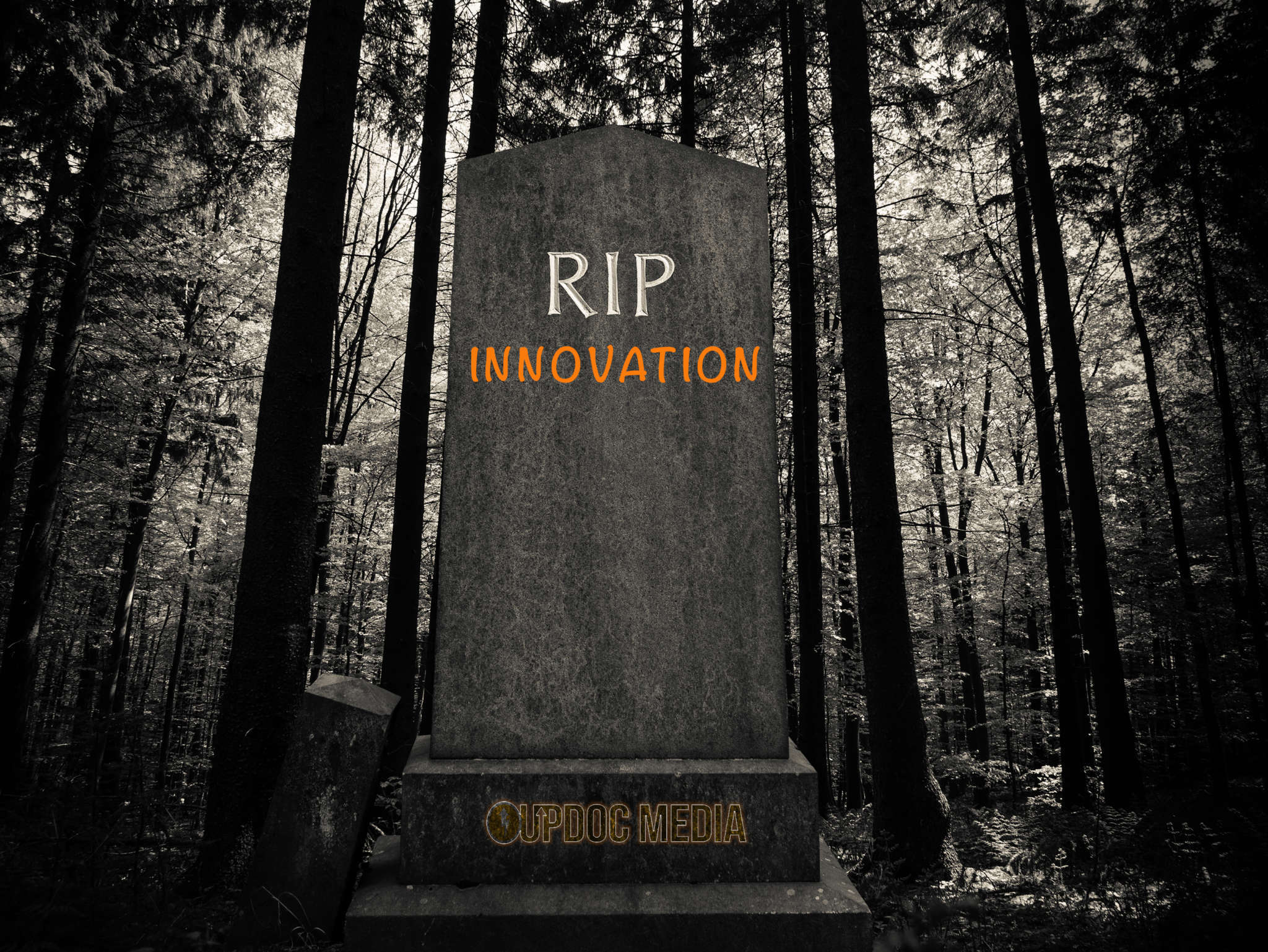
Yup. Just like that. It’s widely acknowledged innovation dies early and something needs to be done. But, what? And, HOW?! To answer these questions, we must understand WHY innovation dies and the curious place that it goes for its lonely, quiet, sad, tragic, and UNNECESSARY passing.
Kind of dark? Try a world without innovation! #NoLightBulbs #SeriouslyThisIsAProblem #TheFutureOfHealthcareDependsOnInnovation #OkayLetsGetToIt!
The Curious Place Innovation Goes To Die
Let us first identify some common places that innovation goes to die. After doing this, we can better understand WHY this is the case. Where are some curious places innovation goes to die? How about…
- Committees… any committee
- The manager’s desk
- The lunch room
- During budget time
- On “sticky notes”
- On unopened or neatly foldered self-sent-emails
- On social media threads and comments
- During steering meetings
- In the suggestion box
Do these places sound familiar? Yeah, I thought it might.
The reason innovation dies in these places becomes more curious when we look behind the scenes to see that many of these places have people in positions who are charged with bringing forth new ideas, better ways, more efficient systems, etc. Wouldn’t that help spawn innovation? Sadly, no… “not remotely.”
Back to the point: Innovation is a precious, fragile, most delicate thing… it’s like what said in the historical fiction film, The Gladiator:
“There was a dream that was Rome. You could only whisper it. Anything more than a whisper and it would vanish, it was so fragile.” Marcus Aurelius, The Gladiator
By its NATURE, innovation begs to be suffocated, smothered, and snuffed out. Why? For the very reason that it is new or not yet fully common — therefore, it is not welcome.
Quite commonly, this is where and why innovation dies; because, a very specific sequence of heads must nod with approval for any idea to hope to lightly test for proof of concept with a pilot. And, after that, it must seek that same sequence of heads along with a new set of sequence of heads to nod to be formalized as part of the system.
For many organizations, it is more common to see this sequential Waterfall method of management rather than parallel Agile project management approaches. Waterfall styles of management requires decision makers to approve, one at a time. Agile management empowers key decisions makers to make decisions in parallel and asynchronously in small, independent, quick iterative action steps.
This becomes complicated by the fact that launching a pilot takes additional resources. New program/product/service lines all need SOMEONE to pay for it via resource, budget, and/or personnel to “allow” for a pilot to even be launched. And, sadly, most pilots are typically met with resistance from incumbent managers; push back occurs as new projects are seen as cannibalistic in nature, taking away from current areas of operational importance in pursuit of some “whim” or “test.”
Moreover, this now seeming cannibalization of resources will most certainly cause the “donating” departments to underperform, making the associated managers look bad… even if the underlying aim of such an effort it is to promote innovation — a common core value for most companies.
This has been historically observed pattern for administrations of all sizes, shapes, settings, and industries. The very problem is found in the fact that managers are most commonly judged by a narrow band of outcome measures. Innovation, new ideas, and pilots tend to deviate from those core metrics. Therefore, the motivation for any manager to sponsor such things are typically self defeating at best, or, nonexistent at worst.
Furthermore, when innovation is proven successful — particularly disruptive innovation — it tends to outperform legacy processes, systems, and outcomes. In the same vein, the associated managers are less inclined to willingly have novel systems overshadow their own hard pressed efforts.
This is where Agile Management comes in to rescue everyone from themselves; the manager who is systematically encouraged to keep the status quo, and, the fledgling pilot with limited resources who has no one to protect it from such smothering forces.
How Will Agile Methodology Help?
The foundation of Agile Methodology is fast, iterative, inter-dependent steps. This diverges from the traditional Waterfall management style in that many decisions and actions can be immediately approved and acted upon in short bursts.
In the space of innovation, this will allow pilots to be more readily approved and funded. And, it also liberates the associated managers from suffering the negative accountability they so fear as a result of redistributing resources away from their core competencies and primary operations.
There is something very important to mention here: For innovation to NOT die, even in this agile space, it must be championed by an influencer leader within the organization who is able to tie together unified measures of success for all the business units involved. It is in this fashion that managers will not be judged or feel punished for doing something good in supporting innovation. It is also in this fashion that innovation will not quickly die after the first objective review, whereby management quickly snuffs out the spark as meaningful short term wins are typically hard to produce in any innovative environment.
Therefore, with a champion of innovation positively influencing teams of managers, the now inter-linked departmental teams can now more freely pursue the aim of novel processes. Innovation harnessed as such can grow without directly disturbing core mission objectives in a way that reflects poorly on paper, or disruptively in the workplace.
Piloting in parallel is the first step towards agile management methodologies.
It is understandingly ironic… curious… that innovation goes to die upon the desks of those charged to support innovation; just as it is tragic that it also tends to die within energetic conversations or furiously inspired scribbling, as those in these think-tank moments quickly remember how new ideas are typically shot down — no matter how good this new idea may be.
So, let me ask you this:
Do you have a new idea?
Approach it in parallel. Begin by finding influencers, leaders, and managers who can support a project in a way that parallels your company’s incumbent core capabilities. And, if you can find no one to support your cause… go do it yourself!









